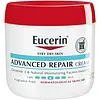What's inside
What's inside
 Key Ingredients
Key Ingredients

 Benefits
Benefits

 Concerns
Concerns

 Ingredients Side-by-side
Ingredients Side-by-side

Water
Skin ConditioningGlycerin
HumectantIsopropyl Palmitate
EmollientCetyl Alcohol
EmollientGlyceryl Stearate
EmollientGlyceryl Stearate Citrate
EmollientAlcohol Denat.
AntimicrobialCoco-Caprylate/Caprate
EmollientButyrospermum Parkii Butter
Skin ConditioningHelianthus Annuus Seed Oil
EmollientPanthenol
Skin ConditioningHydroxypropyl Starch Phosphate
Phenoxyethanol
PreservativeEthylhexylglycerin
Skin ConditioningHydroxyacetophenone
AntioxidantXanthan Gum
EmulsifyingCaprylyl Glycol
EmollientPantolactone
HumectantSodium Citrate
BufferingCitric Acid
BufferingWater, Glycerin, Isopropyl Palmitate, Cetyl Alcohol, Glyceryl Stearate, Glyceryl Stearate Citrate, Alcohol Denat., Coco-Caprylate/Caprate, Butyrospermum Parkii Butter, Helianthus Annuus Seed Oil, Panthenol, Hydroxypropyl Starch Phosphate, Phenoxyethanol, Ethylhexylglycerin, Hydroxyacetophenone, Xanthan Gum, Caprylyl Glycol, Pantolactone, Sodium Citrate, Citric Acid
Water
Skin ConditioningGlycerin
HumectantUrea
BufferingCetearyl Alcohol
EmollientHydrogenated Coco-Glycerides
EmollientOctyldodecanol
EmollientCaprylic/Capric Triglyceride
MaskingButyrospermum Parkii Butter
Skin ConditioningSodium Lactate
BufferingGlyceryl Stearate Se
EmulsifyingCeramide NP
Skin ConditioningLactic Acid
BufferingArginine Hcl
Skin ConditioningGlycine
BufferingAlanine
MaskingCarnitine
CleansingSodium PCA
HumectantCarrageenan
Cholesterol
EmollientHelianthus Annuus Seed Oil
EmollientTapioca Starch
Dimethicone
EmollientPentylene Glycol
Skin ConditioningPhenoxyethanol
PreservativeDecylene Glycol
Skin ConditioningAcrylates/C10-30 Alkyl Acrylate Crosspolymer
Emulsion StabilisingSodium Cetearyl Sulfate
CleansingSodium Chloride
MaskingWater, Glycerin, Urea, Cetearyl Alcohol, Hydrogenated Coco-Glycerides, Octyldodecanol, Caprylic/Capric Triglyceride, Butyrospermum Parkii Butter, Sodium Lactate, Glyceryl Stearate Se, Ceramide NP, Lactic Acid, Arginine Hcl, Glycine, Alanine, Carnitine, Sodium PCA, Carrageenan, Cholesterol, Helianthus Annuus Seed Oil, Tapioca Starch, Dimethicone, Pentylene Glycol, Phenoxyethanol, Decylene Glycol, Acrylates/C10-30 Alkyl Acrylate Crosspolymer, Sodium Cetearyl Sulfate, Sodium Chloride
 Reviews
Reviews

Ingredients Explained
These ingredients are found in both products.
Ingredients higher up in an ingredient list are typically present in a larger amount.
This ingredient is also known as shea butter. It is an effective skin hydrator and emollient.
Emollients help soothe and soften your skin. It does this by creating a protective film on your skin. This barrier helps trap moisture and keeps your skin hydrated. Emollients may be effective at treating dry or itchy skin.
Shea butter is rich in antioxidants. Antioxidants help fight free-radicals, or molecules that may harm the body. It is also full of fatty acids including stearic acid and linoleic acid. These acids help replenish the skin and keep skin moisturized.
While Shea Butter has an SPF rating of about 3-4, it is not a sunscreen replacement.
Shea butter may not be fungal acne safe. We recommend speaking with a professional if you have any concerns.
Learn more about Butyrospermum Parkii ButterGlycerin is already naturally found in your skin. It helps moisturize and protect your skin.
A study from 2016 found glycerin to be more effective as a humectant than AHAs and hyaluronic acid.
As a humectant, it helps the skin stay hydrated by pulling moisture to your skin. The low molecular weight of glycerin allows it to pull moisture into the deeper layers of your skin.
Hydrated skin improves your skin barrier; Your skin barrier helps protect against irritants and bacteria.
Glycerin has also been found to have antimicrobial and antiviral properties. Due to these properties, glycerin is often used in wound and burn treatments.
In cosmetics, glycerin is usually derived from plants such as soybean or palm. However, it can also be sourced from animals, such as tallow or animal fat.
This ingredient is organic, colorless, odorless, and non-toxic.
Glycerin is the name for this ingredient in American English. British English uses Glycerol/Glycerine.
Learn more about GlycerinHelianthus Annuus Seed Oil is the oil derived from the seeds of a Sunflower. Sunflower seed oil is non-fragrant. It is an emollient, meaning it helps to soften the skin.
Sunflower seed oil contains many fatty acids. The fatty acids found in sunflower seeds include (from highest amount to least): linoleic acid, myristic acid, palmitic acid, stearic acid, arachidic acid, oleic acid, and linolenic acid.
These fatty acids help the skin create ceramides. Ceramides play a role in repairing the skin barrier.
Helianthus Annuus Seed Oil helps moisturize the skin. This in turn helps the skin look more rejuvenated and smoother.
Sunflowers are rich in vitamin E.
Historians believe Indigenous cultures of North America domesticated sunflowers before corn. Thus they relied on sunflower oil for a variety of uses. One such use is moisturizing skin and hair.
Sunflower seed oil may not be fungal acne safe. We recommend speaking with a professional if you have any concerns.
Learn more about Helianthus Annuus Seed OilPhenoxyethanol is a preservative that has germicide, antimicrobial, and aromatic properties. Studies show that phenoxyethanol can prevent microbial growth. By itself, it has a scent that is similar to that of a rose.
It's often used in formulations along with Caprylyl Glycol to preserve the shelf life of products.
Water. It's the most common cosmetic ingredient of all. You'll usually see it at the top of ingredient lists, meaning that it makes up the largest part of the product.
So why is it so popular? Water most often acts as a solvent - this means that it helps dissolve other ingredients into the formulation.
You'll also recognize water as that liquid we all need to stay alive. If you see this, drink a glass of water. Stay hydrated!
Learn more about Water